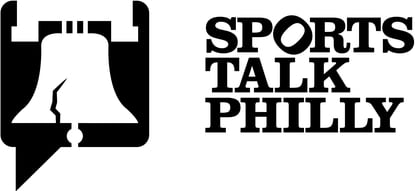It was 1947 that Jackie Robinson broke the color barrier in baseball, but it took a while for our Phillies to break their own color barrier. The Phillies never had any African-American players until 1957 when John Kennedy, formerly of the Negro leagues, joined the club. Only two teams, the Detroit Tigers and Boston Red Sox, took longer to have an African American player on their club. The Phillies first African American superstar, Dick Allen, endured the abuse of even some of Philadelphia's own. Much has changed.
In today's 6-2 win against the Cincinnati Reds, the Phillies played five starters with African American heritage: Jimmy Rollins, Ryan Howard, John Mayberry, Domonic Brown, and Juan Pierre. Yes, despite the Spanish first name and French last name, Pierre has African American heritage. Today's lineup made me look through recent Phillies teams to see the last time when the team even came close to such a mark.
Major League Baseball was only 8.2% African American when the season opened. Three teams had 25% of all African American players on their active rosters; the Chicago Cubs only had Marlon Byrd and the St. Louis Cardinals had none. The game still has superstars such as Matt Kemp, Prince Fielder, and David Price, but the African American presence in baseball is not strongly felt.
The Phillies most recently came closest to a lineup like today's when the aforementioned Byrd was a member of the Phillies. In 2002, the roster featured five African Americans total: Robert Person, Marlon Byrd, Marlon Anderson, Jimmy Rollins, and Doug Glanville. However,Person was on the disabled list by the time Byrd made his major league debut in September.
The National League Champion 1983 Phillies also had a strong African American presence. The Phillies had a twilight appearance of Joe Morgan, Gary Matthews, Garry Maddox, and pitchers Al Holland and Charles Hudson. Jeff Stone also eventually made an appearance with the team. Holland and Hudson of course would not start the same game and Maddox and Matthews each did not come close to playing all 162 games.
There were periods though where the African American presence was not felt in the City of Philadelphia. In 1996 when Glen Murray hit the disabled list, the Phillies had not a single African American player on the active roster. Back in 1996 questioned lingered about the Phillies possibly being racist. At the time, Acel Moore wrote that the Phillies were keeping African American fans away because of a lack of a star player:
Black baseball fans of my generation remember the contemptuous treatment of Dick Allen, the slugging third baseman whom the team eventually traded. Other than Allen, the Phillies have never developed a black superstar.
Of course, the Phillies would go on to develop great African American stars such as Ryan Howard, Jimmy Rollins, and Reggie Taylor. Okay, just kidding about Reggie Taylor. But consider that the Phillies did draft him in 1995 and spent their 1996 second round pick on Rollins, the pick taking place even before the string of July 1996 articles about race. The Phillies also drafted/signed (and missed) on Ron Jones, Jeff Jackson, and Wayne Gomes.
I have been attending Phillies games my whole life, and I truly believe the presence of the Phillies current African American stars have helped unite the City of Philadelphia. Zaki Edwards of PhillyGameday.com wrote a guest piece over at Phillies Nation and writes that interest of and attendance by African American fans has indeed increased in recent years. One reason he explains:
For reasons too numerous to list, a lot of people identify with people of their own race or group, right or wrong. It is this identity that may draw someone to say “hey, there’s a guy like me out there playing baseball and that’s kind of cool.”
I could have missed some Phillies teams along the way but all I know is that I am very happy to see the diversity of Phillies fans at games. And as Zaki thought, there are African American fans wearing both Howard and Halladay jerseys. Moore's belief that a lack of an African American superstar holding people back is no longer a consideration.
When we are all at the park together or celebrating on Broad Street, there is no black or white or Latino: we are just fans. Pretty cool.

